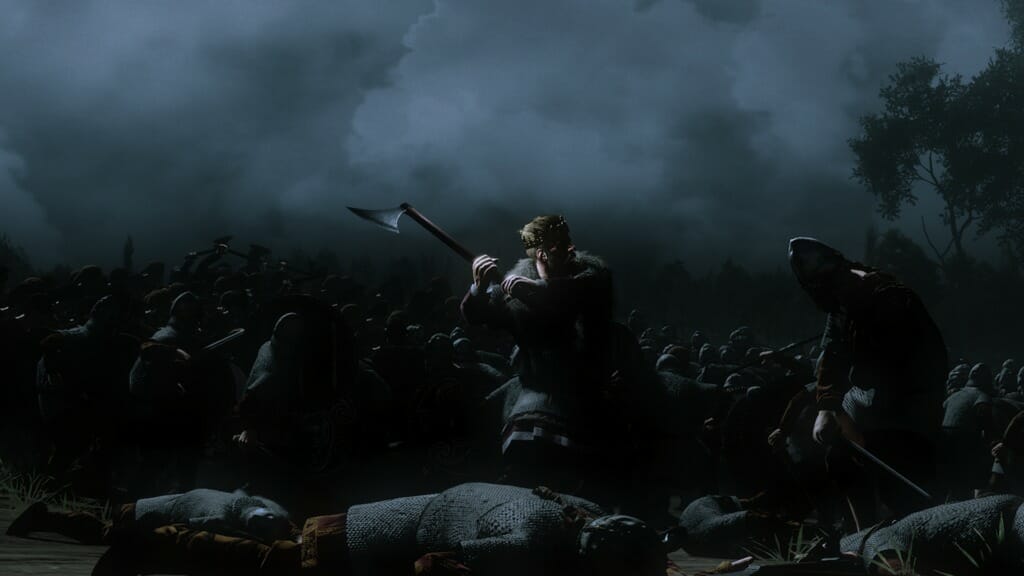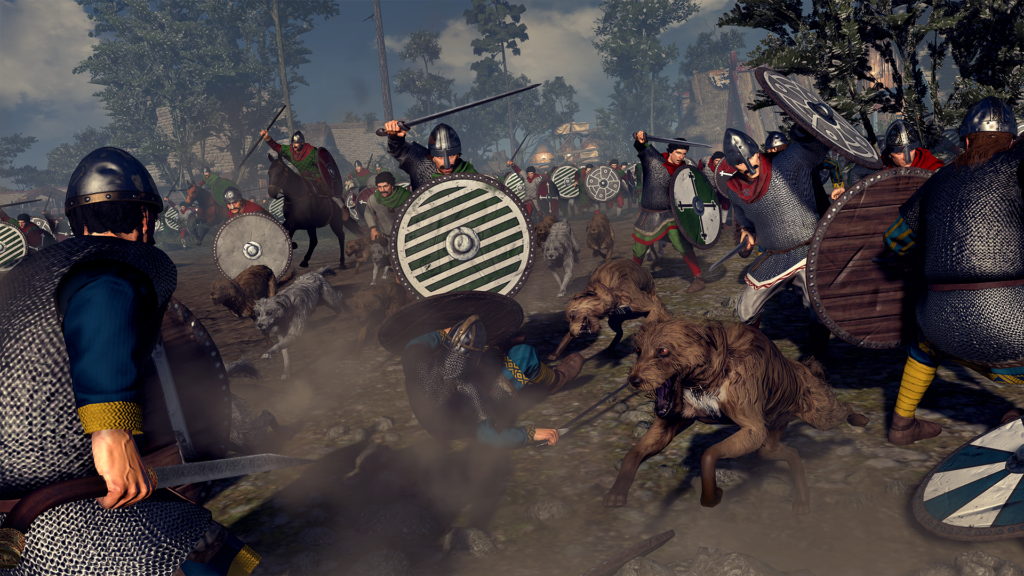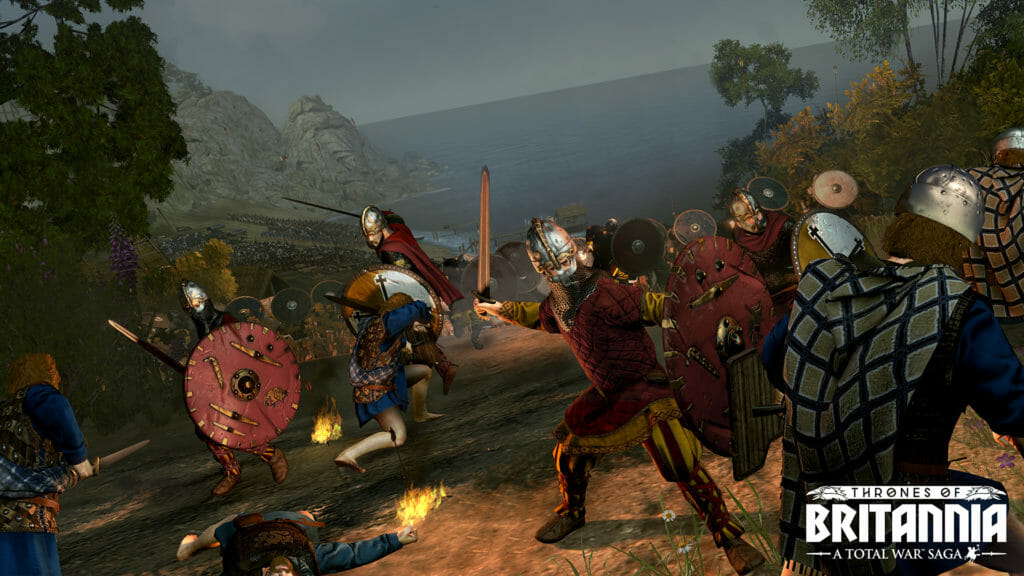Thrones of Britannia: The Gaels
Gaelic culture initially developed in Ireland, their society built around a system of clans and chieftains. With a fierce sense of cultural identity, the Gaels developed distinctive music and artistic styles, and a strong oral tradition. They raided and traded with Roman settlements, and by 878 AD had expanded from Ireland to inhabit much of Scotland.
Further cultural change was wrought with the influx of the Vikings. Some raiders settled in Gaelic lands, becoming the Norse-Gaels. The Scottish Gaels would absorb the Picts to become the Kingdom of Alba – essentially setting the blueprint for modern Scotland.
For centuries, their military relied on skirmisher infantry; lightly armed and armoured, fast-moving and bearing javelins. However, they would adopt the weapons and methods of their enemies too, and over time their armies diversified. The Irish Gaels continued to focus more on the use of skirmishers and, after the Vikings settled, a new class of aristocratic, elite mercenary swordsman, or Gallowglass, characterised their forces. Heavily armoured and armed with great Broadswords, they provided a doughty defence. The Scottish Gaels focussed on developing good all-round sword, spear and cavalry units, as well as excellent crossbowmen.
Cultural Traits:
Loyalty: A powerful sense of cultural identity fosters fealty in Gaelic clans. All characters in Gaelic factions therefore gain a bonus to their loyalty.
Churches: Monasteries and churches are as much a part of the Gaelic economy as their religion. All church-based income for Gaelic factions is increased by 25%.
Legitimacy: Gaelic factions can earn Legitimacy in the eyes of their kinsmen. This improves the loyalty of nobles and family members, and spurs your warriors to fight with greater skill and conviction. Legitimacy is earned in a number of ways; through alliances with other Gaelic factions, from owning or vassalising Gaelic heartlands, and by unlocking key technologies.
Irish Gaelic faction: Mide
Mide lies at the heart of Ireland. Not just geographically, but politically, intellectually and spiritually. Many High Kings have risen from Mide, and its current ruler, Flann Sinna, aspires to that title.
With many fellow Irish factions nearby, Mide is in a position to potentially bring the disparate clans together, and usher in an era of Irish prosperity. However, threats are never far away… the Vikings of Dyflin have settled to the east, and their power and influence are growing. Will Mide strive to keep the uneasy peace? Unite the clans in a war against these Norse settlers? Or find some other route to supremacy?
Faction Leader: King Flann Sinna
Flann Sinna was born in 848 AD to Máel Sechnaill of Clann Cholmáin. He succeeded his father and took the throne of the Kingdom of Mide in 877 AD, to find himself poised for greatness. Just one year later, after the death of his stepfather, he was chosen as the next High King of Ireland.
Flann went on to consolidate his dominance with campaigns against other clans of Ireland, as well as the Viking settlers. He enlisted their military aid from time to time, which caused some of his kin to question his methods. But he never shied from conflict with them either. He was defeated by the Vikings at the Battle of the Pilgrim in 887, but lived on to see many more military successes
Faction Trait: The Fair of Tailtu
Every third summer, Mide may hold the Fair of Tailtu – a grand celebration attended by people from all over Ireland. There are many benefits to the Fair, such as improved diplomatic relations with allies and raised public order. The Fair will cost you money however, and if your capital is under siege, it will be postponed.
Mide also gains a diplomatic bonus with all Irish factions. Their unit roster favours excellent javelin skirmishers, and they field excellent mid to high-tier sword infantry, including the famous Gallowglass.

Scottish Gaelic faction: Circenn
Circenn was in origin Pictish, but became more heavily influenced by the Gaels and other peoples over time as they were driven away from the relentless Viking raids. 878 AD marked the end of the Viking invasions, but Circenn’s troubles were far from over. While she had a firm hold over the eastern coast of Scotland, many threats still exist – both within and without.
Scoan, the capital of Circenn, was once home to the legendary Stone of Destiny, said to bestow divine strength on her people. Where the stone now resides is a mystery, but if clues can be found, surely the Stone’s recovery would be an adventure worth undertaking…
Faction Leader: King Áed mac Cináeda
Áed mac Cináeda succeeded his father and took the throne as king of the Picts in 877 AD. It was a turbulent time; the Viking raiders had brought anarchy to the Pictish lands and they continued to plunder after Áed had come to rule.
Little is known of Áed mac Cináeda’s sovereignty, save that he came into contact with a Gaelic refugee by the name of Giric mac Dúngail, who had fled east from the Viking invasions with his companions. Giric was of common stock, but he was an ambitious man in a time of trouble and opportunity, and soon came to associate with Aed and his followers.
According to Andrew of Wyntoun’s Orygynale Cronykil of Scotland, Áed was slain by Giric, who took the throne for himself. And thus passed one of the shortest rules in Scottish history.
Faction trait: The Stone of Destiny
The Stane o Scuin, or Stone of Destiny, was used for centuries in the coronation of Scottish monarchs. Its whereabout however are unknown. If it can be recovered, surely the ruler of Circenn will become a scion of hope for his people? Throughout the course of a Circenn campaign, you’ll begin to hear rumours of its whereabouts from a number of sources. Following these clues to their conclusions will ultimately lead you to the Stone of Destiny, and the rewards such a legendary relic will bring.
Circenn has access to good all-round infantry and quality spearmen. The faction can also recruit excellent ranged units, including powerful and unique crossbowmen.
Circenn also has access to the Souterrain building, which grants immunity to snow-attrition.



